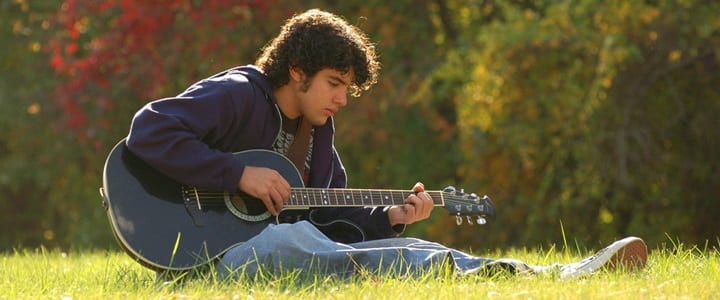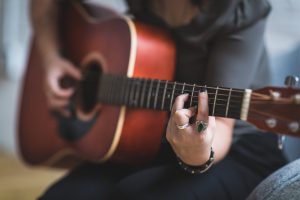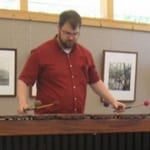
Did you know that by programming your muscle memory, you can make playing the guitar feel more natural, and even improve your technique? Guitar teacher Michael N. shares 10 guitar exercises and tips to help you build up your muscle memory…
Are you looking to improve your guitar playing skills? Maybe you’re new to the instrument, or maybe you’ve been playing for a while but feel like you could be doing better.
In any case, one of the best things you can do to improve is to focus on building muscle memory. This involves practicing regularly and using exercises that help “train” your fingers and hands to play the guitar in the right way.
Today, we’ll take a look at some tips and specific guitar exercises for building muscle memory – and for ultimately improving your guitar playing skills. Let’s get started!
What Should a Beginner Guitarist Practice?
As a new guitar player, you should focus on doing the following guitar exercises for beginners:
- Repetitious guitar exercises and drills
- Sight-reading and music theory
- Warm-ups and cool-downs
- Rhythm and metronome timing
- Guitar scale exercises
- Chords
- Strength and mobility guitar exercises
- Guitar arpeggio exercises
- Individual pieces of songs and solos
- Creative exercises (like improvisation)
- Muscle memory exercises for guitar
Of course, understanding the proper placement of both your right and left hand is essential, too. Here’s a video that will explain the ideal technique for your left hand so you can focus on strumming with your right:
Best Muscle Memory Exercises for Guitar
If you want to improve your muscle memory, these guitar picking exercises for beginners should get the job done just fine.
1. Understand muscle memory
Every instrument player uses muscle memory. Every day activities like driving, riding a bicycle, and even typing this article, are easier because of muscle memory. Remember to continue slow, correct, and “meaningful” practice so that the muscle movements needed are correctly memorized. Once you learn a scale or a chord really well, you will have a remnant of the scale embedded into your memory, specifically your muscle memory. Use this to your advantage by imprinting these memories really well early on!
2. Use a metronome at a slow speed
This type of metronome practice gives you room to concentrate on new technical aspects at an attainable tempo. This type of practice is more valuable, proving the fact that multiple reps of something aren’t worth as much unless focus on improving each time with consistency is inherent.
3. Practice placing chords shapes one finger at a time
Analyze what each finger has to do between each chord. Make those movements with finger one finger at a time, then two at a time, and eventually place your fingers in the whole chord all together. Eventually the entire chord movement will become an automatic move into place with simultaneous finger movement!
4. Practice the chord “shapes” without strumming
Place your fingers in a chord and then change to the next. Try practicing chords in sequences of three or four at a time. These should be chords that you have already learned, so you can make the shapes while watching TV or having a conversation. Taking out the variable of strumming is a great way to isolate and improve your left-hand technique!
5. Pay attention to what changes from one chord to the next
Sometimes a finger does not have to move very far to get to its next location. Sometimes it is already where it needs to be! Be conscious of these situations to make sure you are moving efficiently from chord to chord without extra movement.
6. Make the switches between chords a fast snap
Even if you are waiting four beats between chords or just switching chords freely when you can, try to start quick “snaps” to prepare and think ahead to the next chord. With four beats for instance, you should be thinking about the next chord as fast as possible or on the second beat of the group of four.
7. Counting and closing-in exercise
This is one of my favorite guitar exercises for when you are building up a specific chord change, but you need to be able to do it faster. Example: playing C to G is a challenge for you. Put a metronome on at a very slow and attainable tempo and the first time think in groups of 4 clicks. Play the chord only on the first click of four while counting out loud and changing the finger positions as fast as possible. Feel good after a while? Next try changing the chord within three clicks. Can you move right after the second click? Finally, when you’re up to speed, you can move the chord on each click and the counting and closing in exercise is complete.
8.Don’t learn the wrong thing
One of the tricky things about muscle memory is that your brain can’t tell the difference between what’s right and what’s wrong.
Because of this, it’s easy to commit mistakes and inaccuracies to memory just as it is to practice the correct scales and notes.
Make sure you’ve got your technique down pat the first time – that way, you won’t have to train your brain to “unlearn” what you already learned.
9. Focus on your fingertips
You might be noticing buzzing or strings that sound weird for certain chords. It could be that you are half-muting a string with part of your finger! Make sure to arc your fingers and use just fingertips on the fretboard for some chords and you can avoid the extra contact with the open strings underneath those fingers. Practice placing each finger down on the fretboard, being mindful to only press through the tip of your fingers. Boom. Problem solved.
See Also: Exercise that Builds Strength, Stamina, and Accuracy
10. Think ahead
As soon as one chord or note is placed, strummed or plucked, think ahead to the next necessary movement and make it. Then as soon as that chord is placed, do the same. We will always be thinking ahead until the end of a piece. Now, I am just thinking ahead about the next article I might write!
More Guitar Exercises to Improve Muscle Memory
Here are a few more hand exercises for guitar to help you master the movements you need for successful guitar playing.
1. Try Guitar Finger Exercises…One Finger at a Time
Another simple tip you can use is to play your normal guitar exercises, but doing so just one finger at a time.
When you’re switching between chords just put down one finger at a time until you’ve perfected its spot. Once you know, each and every time without fail, where it needs to go, then you can try placing two fingers down at a time. Soon, you’ll be able to place all of your fingers at once.
Side note – it’s totally fine for one finger to work ahead, getting to the next chord before the others! Just make sure the first finger is on the string you’ll be strumming first, and so on for the rest of the strings in that order.
2. Use Guitar Scale Exercises for Muscle Memory
Many guitarists struggle to remember chords. The key to doing so lies in practice, practice, practice – but it’s not just any kind of practice that will do the trick.
In order to remember your chords, you need to know exactly where all of the individual notes are on your guitar. That’s where guitar scale exercises come in.
Just running through the scales won’t do, however. You need to take a more targeted approach.
For example, try practicing your scales while looking until they are spot on. Then, try playing them without looking. Play the wrong note, and you’ll immediately be able to tell if it’s wrong. Over time, you’ll be able to play the scales (and then the chords) without having to look at all.
3. Try the 1 Minute Game
In the one-minute game, one of the best guitar speed exercises you can do, you’ll pick a set of chords you’re working on. It could be a set of chords from a song or just a sequence of new chords you’ve been rehearsing. Pick four or five to start with.
Set a timer for one minute, then try to change between the chords as many times as you can (correctly) as you do. Keep track of how many times you change in your head so you can monitor your progress.
This will help you commit the position of the chords to muscle memory.
4. Guitar Arpeggio Exercises
Guitar arpeggio exercises can be instrumental in helping you enhance both your knowledge of music theory as well as your understanding of the fretboard.
The result? Greater muscle memory, too.
Arpeggios can help you visualize scales a bit differently. Since they are derived from scales, they allow you to improve your technique and knowledge of where different chords and notes lie.
You’ll memorize the frets from the tab while also being able to visualize how ascending and descending through each arpeggio relates to the key scale.
Here’s a video with some more information on how you can use arpeggios to use your advantage as you build muscle memory:
5. Practice in Parts
Try practicing in parts. Whether it’s a new chord, a new song, or a new solo, break it into small chunks so that you can learn it gradually.
This will help you learn all the parts you need to know correctly – that way, you won’t learn something wrong and have to go back in and correct it later on.
Remember, if you start slow and practice each segment individually, you’ll be able to play the whole thing without a mistake later on – and without having to redo any of your hard work because you memorized it wrong!
Can Guitar Be Self-Taught?
They say that practice makes perfect – and that’s especially true when you’re learning how to play the guitar. The more you repeat the material you’re trying to learn, the better you’ll get.
That said, it won’t do you any good to learn things the wrong way. You need to learn the correct notes, chords, and movements the first time around so that you don’t find yourself committing mistakes to muscle memory.
The best way to learn how to play the guitar? Guitar exercises only go so far – make sure you’ve teamed up with a teacher who will know exactly what you need to be successful.
Learn more guitar exercises and improve your skills by taking lessons with a private guitar teacher. Guitar teachers are available to work with you online via Skype or in-person depending on locations and availability. Search for your guitar teacher now!
Michael N. is multi-instrumentalist and instructor in Oak Creek, WI. Available for lessons in person or online, Michael teaches guitar, drums, singing, and piano, as well as trumpet, marimba, and kazoo! Teaching for more than 7 years, he earned his Masters of Music in Instrumental Conducting and is even the current Youth Percussion Ensemble Director at UW Milwaukee and the Percussion Coach at Oak Creek High School. Learn more about Michael here!
Photo by Alan
Megan L.






